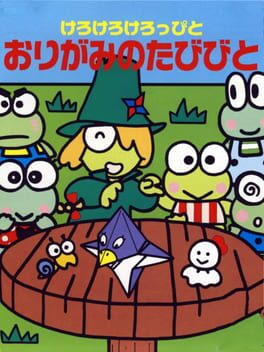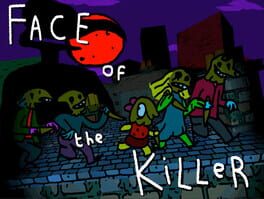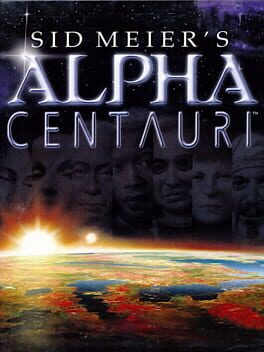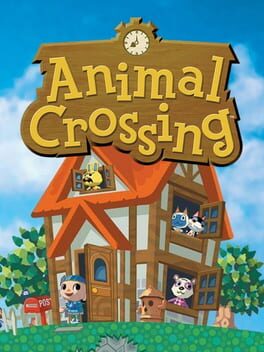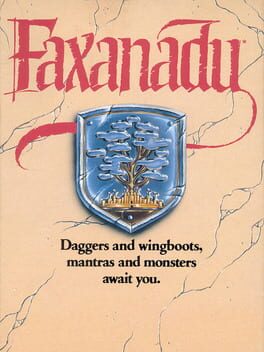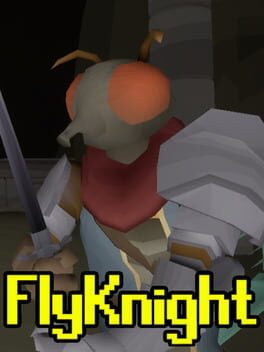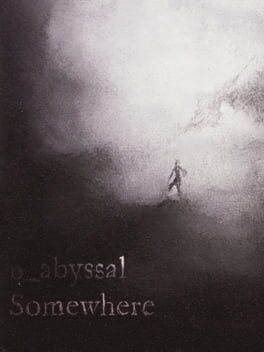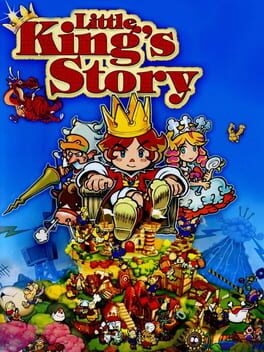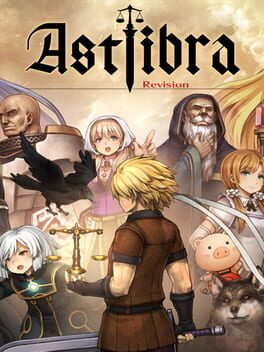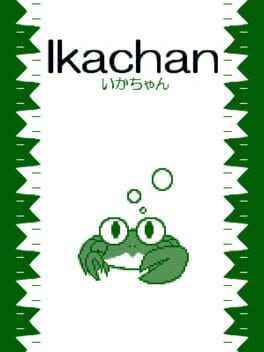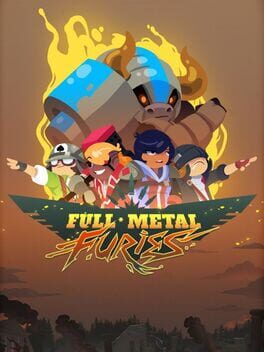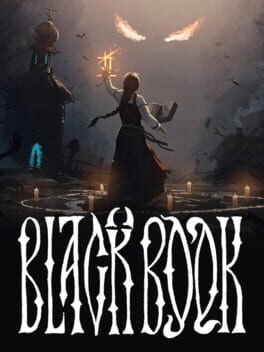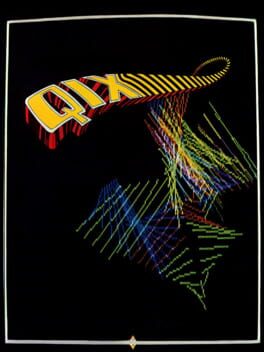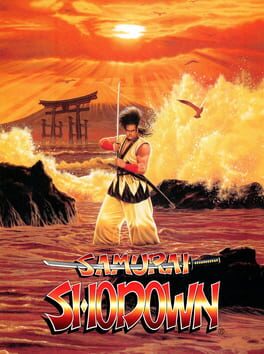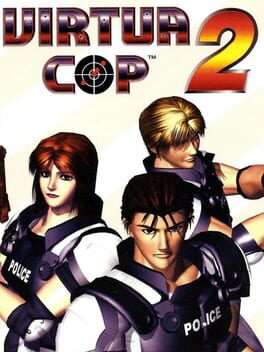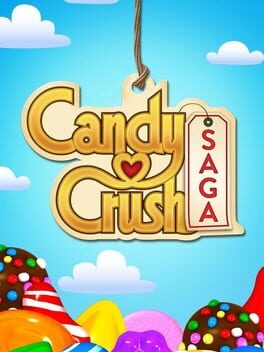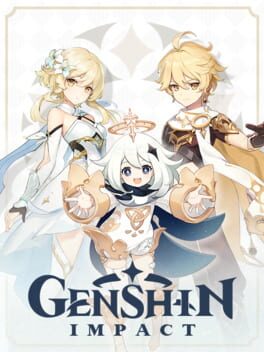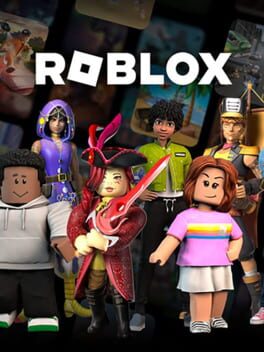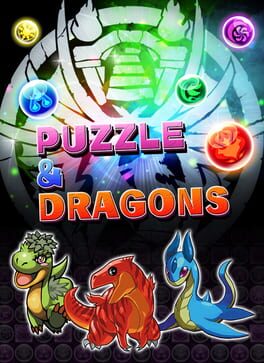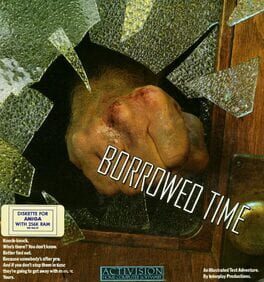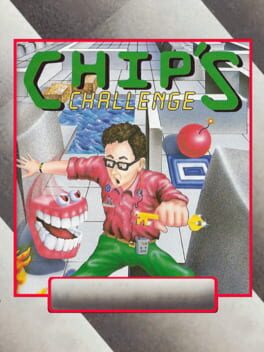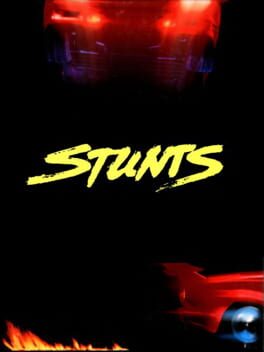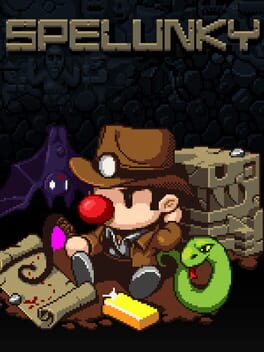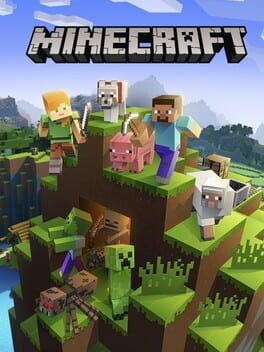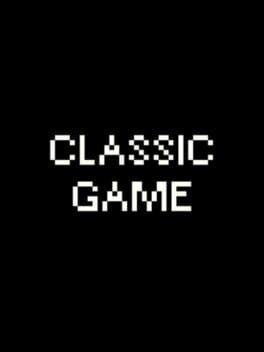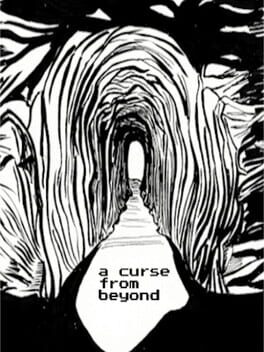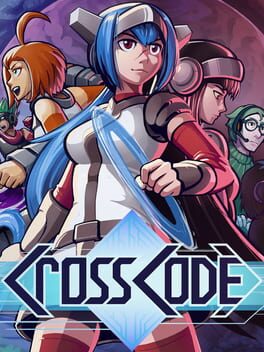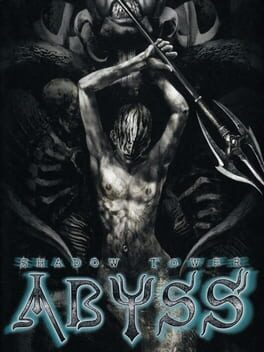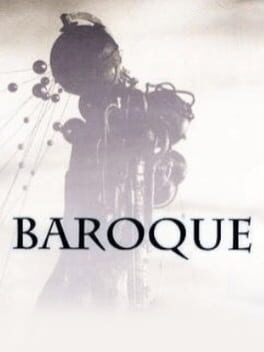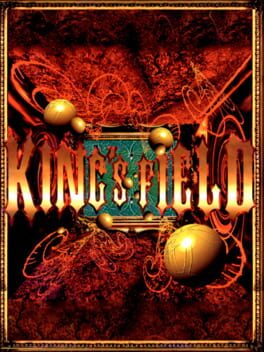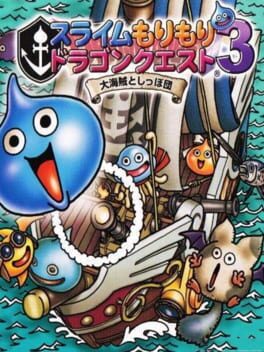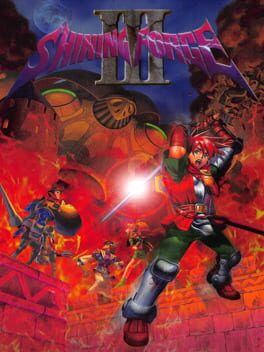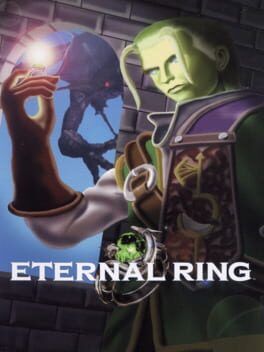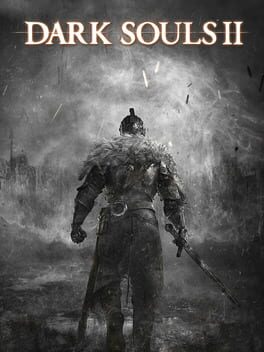MendelPalace
227 reviews liked by MendelPalace
An unassuming bridge between past and future.
Paper is with us always, from birth to death.
The 3DO’s multimedia library is a largely bifurcated collective of (early) childhood edutainment software and adult only erotica. It is an often shocking contrast, the likes of Putt-Putt and Eigo de Go! occupying the same space as Immortal Desire or the aptly-titled Sex. It is a testament to the possibilities afforded to software developers during the multimedia boom of the early 1990s, CD-ROMs making the proliferation of minimal input, high-quality entertainment a reality for those too young to meaningfully engage with interactive software, and those too libidinous for anything but appeasement. This duality makes both extremes intriguing, and led me to gravitate towards Kero Kero Keroppi to Origami no Tabibito and its heart-achingly sweet cover art and premise. One of Sanrio’s cutest characters being taught how to do origami, something I did as a child and when starting university? Sign me up.
Understandably, given the very young audience, Keroppi and his friends are taught traditional, simple origami designs that teach the fundamentals of the craft. Keroppi’s designs are toy-like, including a jumping frog, paper popper, and traditional sumo wrestler. Keroleen’s are cute objects, being flowers, jewellery, and heart shaped stationery. The origami traveller teaches Ganta how to make animals, Kyorosuke to create practical objects like a tissue holder, boxes, and notebooks, and Noberun ‘mysterious’ geometric models and more complex designs befitting his friends’ categories.
Selecting a design shows a short animation of Keroppi and friends playing. Teru Teru gives the design a difficulty rating out of five, and Den Den is an ever-present adviser as the user goes through the design’s steps. The traveller helps out in video segments to demonstrate specific folds and methods. Each design is accompanied by a bonus interactive toy or clip from the Hello Kitty and Friends OVAs. It is altogether simple but effective as a tool for teaching and entertaining.
Paper is expression.
Paper craft is inextricable from childhood itself. Paper is cheap, plentiful, easy to work with, tidy, safe, and ultimately simple. Origami exemplifies the beauty of paper most clearly. It is free of embellishment and destruction. It is singular. It can be functional or aesthetic. It is as permanent and temporary as it needs to be. It represents a compounding of the care (or lack thereof) put into it. It is nearly ancient and incredibly contemporary. It is simple and boundlessly complex. It is flat and sculptural. It is childish and mature. Keroppi and his friends demonstrate this with aplomb. Origami is an expression of the self.
Like Keroppi, I dabbled in origami as a kid. I would make throwing stars of printer paper and mar them with staples and paperclips to give them heft. Cootie catchers were scrawled on. Jumping frogs cut for ease of creation. While entirely unintentional, this engagement with origami was a refusal of the art form itself by trying to make the paper into something it was not.
On the eve of entering university, I turned to origami again, crafting modular Sonobe models and simple animals. The discovery of contemporary origami by the likes of Gen Hagiwara, Jun Maekawa, and Hideo Komatsu gave me the drive to continue the craft further because of the possibilities in a single square of paper. As my first year of university drew to a close, I presented to my mom on her birthday a senbazuru I had been working on for the past eight months. She still has it hanging on the wall of her office. I folded cranes of all sizes and left them around campus for others to find and take, and though they would sometimes end up in the trash their intrinsic impermanence meant it never bothered me. It’s just paper after all. I made increasingly complex models to push my skills and try and impress a girl I liked. I got a cat and made her little paper doodads to bat about. I rather ironically got a crane permanently marked into my skin. And for whatever reason, I slowed down my craft and eventually stopped. A global pandemic began. My lone crane became surrounded by flowers. I sent parcels to my boyfriend and packed them with cranes I had folded long ago. The models I made that were strewn around my house were put away in drawers and bins, the senbazuru and some custom boxes I had made being the only concrete symbols of this years-long hobby of mine.
Paper is a constant.
What I adore most about Kero Kero Keroppi to Origami no Tabibito is that it brings a centuries old craft into the hypermodern age of multimedia. It could work just as well as a book or tape, but it takes advantage of this new medium to address the realities of a radically shifting world. Shortened attention spans are sated with visual stimuli. Origami as an expression of national, abstract culture is conveyed through materialistic, corporate culture to try and ensure the survival of the craft. It takes something so accessible it can be done with leaves and hides it behind the extreme cost barrier of a 3DO or FM Towns Marty. Most importantly, it presents these origami models as means to an expressive end beyond the purely aesthetic. It shows me what I was perhaps missing in my drive to make complex origami. I was missing the intrinsic fun of paper, of craft, of play.
Paper is with us always, from rebirth to death.
I began HRT in 2021. My flimsy paper birth certificate was marked by a gender I knew to be incorrect for a decade. In late 2022 I came out to my parents and underwent the legal hullabaloo necessary to fix the gender marker on my identification. The impermanent birth certificate was mailed off and destroyed. It was replaced by a polymer certificate. Paper that had been with me from birth saw me through to legal [rebirth/death].
I started Kero Kero Keroppi to Origami no Tabibito in the morning, sat at my desk in my underwear in a body radically different from the one I had when last I folded paper. A body that was new. I moved to the floor, and folded without the precision I once obsessed over. My imperfections compounded.
It was an expression of the self that was real. The sun broke through the clouds and was warm on my skin.
Paper is with us always, from birth to death.
The 3DO’s multimedia library is a largely bifurcated collective of (early) childhood edutainment software and adult only erotica. It is an often shocking contrast, the likes of Putt-Putt and Eigo de Go! occupying the same space as Immortal Desire or the aptly-titled Sex. It is a testament to the possibilities afforded to software developers during the multimedia boom of the early 1990s, CD-ROMs making the proliferation of minimal input, high-quality entertainment a reality for those too young to meaningfully engage with interactive software, and those too libidinous for anything but appeasement. This duality makes both extremes intriguing, and led me to gravitate towards Kero Kero Keroppi to Origami no Tabibito and its heart-achingly sweet cover art and premise. One of Sanrio’s cutest characters being taught how to do origami, something I did as a child and when starting university? Sign me up.
Understandably, given the very young audience, Keroppi and his friends are taught traditional, simple origami designs that teach the fundamentals of the craft. Keroppi’s designs are toy-like, including a jumping frog, paper popper, and traditional sumo wrestler. Keroleen’s are cute objects, being flowers, jewellery, and heart shaped stationery. The origami traveller teaches Ganta how to make animals, Kyorosuke to create practical objects like a tissue holder, boxes, and notebooks, and Noberun ‘mysterious’ geometric models and more complex designs befitting his friends’ categories.
Selecting a design shows a short animation of Keroppi and friends playing. Teru Teru gives the design a difficulty rating out of five, and Den Den is an ever-present adviser as the user goes through the design’s steps. The traveller helps out in video segments to demonstrate specific folds and methods. Each design is accompanied by a bonus interactive toy or clip from the Hello Kitty and Friends OVAs. It is altogether simple but effective as a tool for teaching and entertaining.
Paper is expression.
Paper craft is inextricable from childhood itself. Paper is cheap, plentiful, easy to work with, tidy, safe, and ultimately simple. Origami exemplifies the beauty of paper most clearly. It is free of embellishment and destruction. It is singular. It can be functional or aesthetic. It is as permanent and temporary as it needs to be. It represents a compounding of the care (or lack thereof) put into it. It is nearly ancient and incredibly contemporary. It is simple and boundlessly complex. It is flat and sculptural. It is childish and mature. Keroppi and his friends demonstrate this with aplomb. Origami is an expression of the self.
Like Keroppi, I dabbled in origami as a kid. I would make throwing stars of printer paper and mar them with staples and paperclips to give them heft. Cootie catchers were scrawled on. Jumping frogs cut for ease of creation. While entirely unintentional, this engagement with origami was a refusal of the art form itself by trying to make the paper into something it was not.
On the eve of entering university, I turned to origami again, crafting modular Sonobe models and simple animals. The discovery of contemporary origami by the likes of Gen Hagiwara, Jun Maekawa, and Hideo Komatsu gave me the drive to continue the craft further because of the possibilities in a single square of paper. As my first year of university drew to a close, I presented to my mom on her birthday a senbazuru I had been working on for the past eight months. She still has it hanging on the wall of her office. I folded cranes of all sizes and left them around campus for others to find and take, and though they would sometimes end up in the trash their intrinsic impermanence meant it never bothered me. It’s just paper after all. I made increasingly complex models to push my skills and try and impress a girl I liked. I got a cat and made her little paper doodads to bat about. I rather ironically got a crane permanently marked into my skin. And for whatever reason, I slowed down my craft and eventually stopped. A global pandemic began. My lone crane became surrounded by flowers. I sent parcels to my boyfriend and packed them with cranes I had folded long ago. The models I made that were strewn around my house were put away in drawers and bins, the senbazuru and some custom boxes I had made being the only concrete symbols of this years-long hobby of mine.
Paper is a constant.
What I adore most about Kero Kero Keroppi to Origami no Tabibito is that it brings a centuries old craft into the hypermodern age of multimedia. It could work just as well as a book or tape, but it takes advantage of this new medium to address the realities of a radically shifting world. Shortened attention spans are sated with visual stimuli. Origami as an expression of national, abstract culture is conveyed through materialistic, corporate culture to try and ensure the survival of the craft. It takes something so accessible it can be done with leaves and hides it behind the extreme cost barrier of a 3DO or FM Towns Marty. Most importantly, it presents these origami models as means to an expressive end beyond the purely aesthetic. It shows me what I was perhaps missing in my drive to make complex origami. I was missing the intrinsic fun of paper, of craft, of play.
Paper is with us always, from rebirth to death.
I began HRT in 2021. My flimsy paper birth certificate was marked by a gender I knew to be incorrect for a decade. In late 2022 I came out to my parents and underwent the legal hullabaloo necessary to fix the gender marker on my identification. The impermanent birth certificate was mailed off and destroyed. It was replaced by a polymer certificate. Paper that had been with me from birth saw me through to legal [rebirth/death].
I started Kero Kero Keroppi to Origami no Tabibito in the morning, sat at my desk in my underwear in a body radically different from the one I had when last I folded paper. A body that was new. I moved to the floor, and folded without the precision I once obsessed over. My imperfections compounded.
It was an expression of the self that was real. The sun broke through the clouds and was warm on my skin.
Face Of The Killer
2024
SWEDISH WOMEN WANT YOU TO KNOW ABOUT THIS 💯💯
this is that good good killer shit. as the final game in the series, Face Of the Killer is absolutely fantastic.
in its presentation, it's the most advanced, with even more from the game's camera. the prior games do cool things with the camera, yes, but this one kicks so much ass with all the new things it tries. narrative is progressed through the new uses of the camera, moods are set, and yet the classic Of the Killer camera 'jank' is all still wholly present. the use of 3D is increased, effectively, while still maintaining the delightful cartoony art style the series is known for. our main protagonist, BB, is even more expressive than ever, too. there are so many more unique facial expressions for our girlie, and i love her so so much.
everything really comes together in this one. with references to all the past games, it's an excellent send-off, and definitely my new favorite in the series. it's just as surreal as its siblings, if not more so. all of thecatamites' presented themes over the course of the series are present, while still covering new territory that makes his games so damn delightful and so damn meaningful as art. the concept of history is fuckin weird! the way that manmade constructions just kinda stack on top of each other is fuckin weird! figuring out what you're going to do after college sucks! what the fuck even is immersive theater?? yet Of the Killer doesn't stop there at those surface level observations, and makes whole games out of those concepts adorned with juicy social commentary. this one blends all of those fuckers together in a wonderful cacophony and honestly? i don't even feel smart enough to talk about any of it in a way that's constructive. maybe some day when i replay all of these games in the future, i'll take a deeper dive into the politics "of the killer". just know that i fucking love it and i agree so hard with many of the sentiments thecatamites presents in this series.
the game makes fun of many horror tropes, and then flips the script ropes you in with them. it's a constant back and forth, and it isn't afraid to even make fun of its own construction at times. the humor is incredibly casual and so effortless, yet the more grim moments are still unsettling. he has this way of writing that makes you feel like you forgot how to read while still being coherent, and i love it to death. i'm sad that this is the last one, but damn, it did not disappoint me.
y'know, maybe they're right. history IS a nightmare-- and loving it!
this is that good good killer shit. as the final game in the series, Face Of the Killer is absolutely fantastic.
in its presentation, it's the most advanced, with even more from the game's camera. the prior games do cool things with the camera, yes, but this one kicks so much ass with all the new things it tries. narrative is progressed through the new uses of the camera, moods are set, and yet the classic Of the Killer camera 'jank' is all still wholly present. the use of 3D is increased, effectively, while still maintaining the delightful cartoony art style the series is known for. our main protagonist, BB, is even more expressive than ever, too. there are so many more unique facial expressions for our girlie, and i love her so so much.
everything really comes together in this one. with references to all the past games, it's an excellent send-off, and definitely my new favorite in the series. it's just as surreal as its siblings, if not more so. all of thecatamites' presented themes over the course of the series are present, while still covering new territory that makes his games so damn delightful and so damn meaningful as art. the concept of history is fuckin weird! the way that manmade constructions just kinda stack on top of each other is fuckin weird! figuring out what you're going to do after college sucks! what the fuck even is immersive theater?? yet Of the Killer doesn't stop there at those surface level observations, and makes whole games out of those concepts adorned with juicy social commentary. this one blends all of those fuckers together in a wonderful cacophony and honestly? i don't even feel smart enough to talk about any of it in a way that's constructive. maybe some day when i replay all of these games in the future, i'll take a deeper dive into the politics "of the killer". just know that i fucking love it and i agree so hard with many of the sentiments thecatamites presents in this series.
the game makes fun of many horror tropes, and then flips the script ropes you in with them. it's a constant back and forth, and it isn't afraid to even make fun of its own construction at times. the humor is incredibly casual and so effortless, yet the more grim moments are still unsettling. he has this way of writing that makes you feel like you forgot how to read while still being coherent, and i love it to death. i'm sad that this is the last one, but damn, it did not disappoint me.
y'know, maybe they're right. history IS a nightmare-- and loving it!
WE HAVE ACQUIRED TECHNOLOGY!
“We live in capitalism. Its power seems inescapable. So did the divine right of kings. Any human power can be resisted and changed by human beings. Resistance and change often begin in art, and very often in our art, the art of words.”
-- Ursula K. Le Guin, Datalinks
“We live in capitalism. Its power seems inescapable. So did the divine right of kings. Any human power can be resisted and changed by human beings. Resistance and change often begin in art, and very often in our art, the art of words.”
-- Ursula K. Le Guin, Datalinks
Animal Crossing
2001
K.K. Slider himself delivers Animal Crossing's thesis at the beginning of the game when you first boot it up. If you haven't given this entry in the series a shot, I'd recommend you try the game first before reading this review. This isn't a case where there's spoilers or anything like that, but I do think it's best to read this after experiencing the game for a while. This written from a retrospective lens rather than as a recommendation.
Animal Crossing is the strongest champion of virtual interactivity in video games.
This video game provides a world you live in for as long as you take care of it. It's like a bonsai tree that you maintain and cultivate, which gives it something akin to a life. Animal Crossing uses that life-medium hybrid to converse with players about living as an individual in a social world similar to our own. It makes lighthearted satirical fun of the world that made it in its friendly assholes and utopian capitalism. It's a fun world made to encapsulate and interact with reality.
Animal Crossing gracefully manifests what other mediums could only dream of doing; it creates a world for the player to necessarily immerse themselves in. The game achieves its immersion through participation with only brief, unassertive guidance. Unlike popular media outside of video games where their fictional worlds are statically and directly communicated, the towns of Animal Crossing and their meaning to the player change in ways not limited to the player's interpretation. The purposes within Animal Crossing shift to what players make of it through options in interactivity. Beyond the few tutorial tasks in the introduction, the game gladly welcomes its players ignoring any and all of the intent in its creation.
Animal Crossing encourages communication within its own community and beyond. The game tells you to share your town with your real friends outside of the game. It doesn't want to replace; it wants to support. The game constantly seeks to reflect you in your written letters, your brief friendships, and your impression on the town's nature, and it urges players right from the introduction to share your sandcastle town with others. Villagers from your town can move to the towns of other players you have interacted with. You can visit those other towns from other players by putting their memory card in the second slot. Animal Crossing can be a medium for connection.
There's something tragically idealistic here in what I see as this Animal Crossing's most unfortunate flaw. Animal Crossing has high hopes in this social dream that is a dated and ignored burden to fulfill in the present. However, I do find that this flaw does give towns some neat physicality. I can remember myself as a kid imagining the miniature towns being stored inside of blocks in those tiny memory cards where all my villagers continued to live out their lives, while the GameCube and the CRT it was hooked up to were a magnifying glass and an avatar. This flaw also did not exist in the series for long, as Animal Crossing's unfairly disregarded sequel introduced a much easier way to share your town with others.
Like the villagers in its towns, Animal Crossing itself won't last forever. It only has seven years left. After 11:59pm on December 31st, 2030, the in-game calendar will break and reset to January 1st, 2030. The game will still be playable, but it will no longer function as intended. Animal Crossing discs in their unmodifiable state on their GameCubes will succumb to this as their discs rot, memory cards corrupt, and consoles break. Future Animal Crossing games have been made, but none of them with the sass or the abstract zaniness that came in the first entry. The sequel I previously mentioned traded the sass for a pensive melancholy vibe. That sequel's banal follow-up completely eroded even that new identity away.
The series has recently built itself a new identity as something closer to a dollhouse in its bestselling, joyous, resortlike entry (read my review here). New Horizons captures what the world wanted as an escape from a pandemic at the time of its release. Compared to the original, New Horizons is more likely to go down in any history of video games for its popularity and the social impact it had. New Horizons serves as an artifact of its time. In contrast, Animal Crossing brings forth a far less idealized (but still very fun) reflection of reality. As the experimental origin of the series, it does less to interpret desires of the masses, and does more to capture a sentiment about modern lifestyles. Animal Crossing is artistic ethnography embedded in a toy with indifference towards being seen as an art. It's not a film, not a painting, not a sculpture, not a song, not a dance, not a book. It doesn't strive to be anything like them.
Animal Crossing for the Nintendo GameCube could only want (and deserve) to be recognized and respected as itself; a video game through and through.
Animal Crossing is the strongest champion of virtual interactivity in video games.
This video game provides a world you live in for as long as you take care of it. It's like a bonsai tree that you maintain and cultivate, which gives it something akin to a life. Animal Crossing uses that life-medium hybrid to converse with players about living as an individual in a social world similar to our own. It makes lighthearted satirical fun of the world that made it in its friendly assholes and utopian capitalism. It's a fun world made to encapsulate and interact with reality.
Animal Crossing gracefully manifests what other mediums could only dream of doing; it creates a world for the player to necessarily immerse themselves in. The game achieves its immersion through participation with only brief, unassertive guidance. Unlike popular media outside of video games where their fictional worlds are statically and directly communicated, the towns of Animal Crossing and their meaning to the player change in ways not limited to the player's interpretation. The purposes within Animal Crossing shift to what players make of it through options in interactivity. Beyond the few tutorial tasks in the introduction, the game gladly welcomes its players ignoring any and all of the intent in its creation.
Animal Crossing encourages communication within its own community and beyond. The game tells you to share your town with your real friends outside of the game. It doesn't want to replace; it wants to support. The game constantly seeks to reflect you in your written letters, your brief friendships, and your impression on the town's nature, and it urges players right from the introduction to share your sandcastle town with others. Villagers from your town can move to the towns of other players you have interacted with. You can visit those other towns from other players by putting their memory card in the second slot. Animal Crossing can be a medium for connection.
There's something tragically idealistic here in what I see as this Animal Crossing's most unfortunate flaw. Animal Crossing has high hopes in this social dream that is a dated and ignored burden to fulfill in the present. However, I do find that this flaw does give towns some neat physicality. I can remember myself as a kid imagining the miniature towns being stored inside of blocks in those tiny memory cards where all my villagers continued to live out their lives, while the GameCube and the CRT it was hooked up to were a magnifying glass and an avatar. This flaw also did not exist in the series for long, as Animal Crossing's unfairly disregarded sequel introduced a much easier way to share your town with others.
Like the villagers in its towns, Animal Crossing itself won't last forever. It only has seven years left. After 11:59pm on December 31st, 2030, the in-game calendar will break and reset to January 1st, 2030. The game will still be playable, but it will no longer function as intended. Animal Crossing discs in their unmodifiable state on their GameCubes will succumb to this as their discs rot, memory cards corrupt, and consoles break. Future Animal Crossing games have been made, but none of them with the sass or the abstract zaniness that came in the first entry. The sequel I previously mentioned traded the sass for a pensive melancholy vibe. That sequel's banal follow-up completely eroded even that new identity away.
The series has recently built itself a new identity as something closer to a dollhouse in its bestselling, joyous, resortlike entry (read my review here). New Horizons captures what the world wanted as an escape from a pandemic at the time of its release. Compared to the original, New Horizons is more likely to go down in any history of video games for its popularity and the social impact it had. New Horizons serves as an artifact of its time. In contrast, Animal Crossing brings forth a far less idealized (but still very fun) reflection of reality. As the experimental origin of the series, it does less to interpret desires of the masses, and does more to capture a sentiment about modern lifestyles. Animal Crossing is artistic ethnography embedded in a toy with indifference towards being seen as an art. It's not a film, not a painting, not a sculpture, not a song, not a dance, not a book. It doesn't strive to be anything like them.
Animal Crossing for the Nintendo GameCube could only want (and deserve) to be recognized and respected as itself; a video game through and through.
Citizen Sleeper
2022
when i read Neuromancer back in 2011 i think i was never able to quite picture whatever William Gibson was trying to describe. there's a thing with sci-fi text based works where everything is described by comparing it to a familiar object, connected to another familiar object and somehow you should be able to imagine the whole picture going by that. well i can't, i don't think it's a particular lack of imagination, i think it might be the exact opposite really, because i'm sure whatever i'm imagining has nothing to do with what was described. this is not frustrating in any way though, i think it just makes my experience with this type of work a tad more abstract. citizen sleeper is already inherently abstract, so in some level i imagine i was supposed to imagine whatever i wanted, however i wanted.
it's a good game about befriending people, listening to stories, hating capitalism and corporations, accepting physicality and transience. or at least that's how i played it. i don't think the game gives you too many options to branch out, but i still think each individual input can make this experience a whole lot different. i'm eager to know how many people were experiencing money issues while Ethan forced you to pay their tab, or unlocked places and or situations far earlier than the game expected you too. it's just fun, short and sweet, i enjoyed my time with it even though for a while i didn't think i would.
it's a good game about befriending people, listening to stories, hating capitalism and corporations, accepting physicality and transience. or at least that's how i played it. i don't think the game gives you too many options to branch out, but i still think each individual input can make this experience a whole lot different. i'm eager to know how many people were experiencing money issues while Ethan forced you to pay their tab, or unlocked places and or situations far earlier than the game expected you too. it's just fun, short and sweet, i enjoyed my time with it even though for a while i didn't think i would.
First Castlevania and search action title generally I've actually played to completion! Technically need to fight the final boss again on Castle A to get actual 100% completion but maybe another time lol. This was fun tho, assorted thoughts follow:
-The Fusion Spell system is p cool albeit in serious need of an option to automatically revert to the normal equipped subweapon when your MP runs out.
-Idk where ppl are coming from dumping on the soundtrack, even the name entry music is a banger.
-Also really like Juste as a protag - his sassy little directional-up action pose, the fact he finds one empty room in a cursed castle and just reacts with an arch "well THIS won't do" and proceeds to make it his pad, he's fun (shout out to twinks-and-femboys-only queen Ayami Kojima for a v slick player character design too).
Think I've finally found my way into enjoying This Sort of Thing after years of bouncing off them maybe, looking forward to trying the others.
EDIT: Forgot to mention I am absolutely tickled by how the general plot can be read as like an anime-Gothic rated T for teen take on Miike's Gozu (man is desperately in love with/wants to fuck his best friend and represses it so hard he manifests a harrowing psycho-spiritual hell for himself with a woman brought in as a fig leaf over/proxy for his tormented homosexual desire to fuck aforementioned best friend until an act of mutual recognition/desire and lots of viscera finally allows him to be honest with himself and the two of them and their unharmed lady friend waltz off happily into the sunset arm-in-arm).
-The Fusion Spell system is p cool albeit in serious need of an option to automatically revert to the normal equipped subweapon when your MP runs out.
-Idk where ppl are coming from dumping on the soundtrack, even the name entry music is a banger.
-Also really like Juste as a protag - his sassy little directional-up action pose, the fact he finds one empty room in a cursed castle and just reacts with an arch "well THIS won't do" and proceeds to make it his pad, he's fun (shout out to twinks-and-femboys-only queen Ayami Kojima for a v slick player character design too).
Think I've finally found my way into enjoying This Sort of Thing after years of bouncing off them maybe, looking forward to trying the others.
EDIT: Forgot to mention I am absolutely tickled by how the general plot can be read as like an anime-Gothic rated T for teen take on Miike's Gozu (man is desperately in love with/wants to fuck his best friend and represses it so hard he manifests a harrowing psycho-spiritual hell for himself with a woman brought in as a fig leaf over/proxy for his tormented homosexual desire to fuck aforementioned best friend until an act of mutual recognition/desire and lots of viscera finally allows him to be honest with himself and the two of them and their unharmed lady friend waltz off happily into the sunset arm-in-arm).
Faxanadu
1987
[AVGN voice] More like faxing in a doodie! [Cue skit]
Simon's Quest never stood a chance. Zelda II? Just another competitor for the best NES action-RPG of 1987. Xanadu who? That ain't affordable! Why buy a home computer when you can get the [approximate] thrills of computer role-playing action on your TV?! Faxanadu, baby. It's only the lovechild of two of Japan's most lauded developers, seizing the chance to entertain untold numbers of schoolboys with fantasy swashbuckling and dungeoneering like nothing else. Well, maybe that last part's an exaggeration. Maybe this was the best you could get on a cartridge, but any kid lucky enough to own a Famicom Disk System had similar titles well within reach, all iterating on the likes of Xanadu, Zelda, Metroid, and Castlevania.
Poisoned roots flow from the base of World Tree, our hero's old home now corrupted by a cosmic evil. Faxanadu toys with a kind of dark fantasy that had so far evaded the Famicom's library, bewitching its owners with sojourns into caverns, forests, castles, and places that should not be. The people once called Dwarfs now scour this Yggdrasil in mutated forms, and the wise men of the realm wait patiently by desecrated fountains and shrines, hoping for a hero patient and skilled enough to heed their call. While I'm happy to report the game comports itself admirably versus the other ARPGs in the room, its niggling flaws and inability to transcend its inspirations pose a problem for the game today. Nonetheless, it's a testament to how quickly its developers improved at making Famicom exclusives, and one of the breeziest but filling genre exercises that Hudson Soft made for the system.
| "Daggers and wingboots, mantras and monsters await you." |
Famicom Xanadu, as the portmanteau suggests, had a mission to fulfill: bring Nihon Falcom's seminal 1985 PC RPG to the console-bound masses, no matter what it costed Hudson. The two companies knew each other distantly via the Japanese PC games market already, and this collaboration marked the start of a several years' long partnership. Hudson later ported key Falcom titles like Ys I & II and Dragon Slayer: The Legend of Heroes to the former's new console of choice, the PC Engine (CD). Falcom, meanwhile, reaped the crop, collecting hefty residuals from sales of their games on platforms they had no experience with, expertly handled by their partners from Hokkaido. From '87 onward, Falcom made inroads on the far larger console market without having to divert their staff away from the tighter, more competitive J-PC realm, at least until they made their own PC-to-console push in the early '90s.
What we now deem the side-scrolling ARPG had blossomed beyond its niche by '87, thanks to early hits like Namco's Dragon Buster and the diversification shown with cult classics like Layla and Mugen Senshi Valis. Developers tackling the genre sought to meld dungeon crawling, cinematic pacing, and skillful play into something you could play on the simplest of systems. In that sense, '87 was maybe the most important year in ARPG history: Falcom came out swinging with three of the genre's all-time classics (Ys, Sorcerian, and Drasle Family), followed by the likes of Konami (Maze of Gailous, Arumana no Kiseki), Capcom (Black Tiger), Westone (Wonder Boy in Monster Land), Game Arts (Zeliard), and even the NES remake of Rygar. I bring all these up to explain why I've rated Faxanadu roughly in the middle of the pack. There was a lot of competition in the ARPG space at this point in time, and Hudson arguably came in on the back foot.
You'd be right to doubt Hudson's record with console-oriented adventures after the janky results of Challenger, Milon's Secret Castle, Mickey Mousecapade, and arguably the first Adventure Island. The company had triumphed early on with solid renditions of Lode Runner and former J-PC games like Binary Land, but their competitors had leapfrogged them in the art of hours-long Famicom blockbusters. 1987 saw a lot of ups and downs for Hudson's various Famicom teams, with Faxanadu thankfully indicating an end to all but the occasional abject failure. Such a turning point helped double-fold for their upcoming PC Engine projects. Neutopia and Dungeon Explorer, derivative as they are, benefited greatly from the lessons in relatively consistent design that the developer learned this fateful year. I wish we knew who precisely worked on Faxanadu other than musical maestros Jun Chikuma and Toshiaki Takimoto, but good job to everyone else!
The adventure starts off in the main castle town, Eolis, beneath our once verdant World Tree. Despondent residents mill around streets and dim rooms, waiting for relief. The "dwarfs", now resembling creatures from the likes of Alien or Metroid, creep around the town walls, forcing new players to learn the jumping mechanics within the first few minutes. A desperate passer-by hands over their ring, the symbol of Elf kind and one's ticket to an audience with Eolis' king. He tells of a meteorite, crash landed high up within the World Tree, which has poisoned most of the waterways and especially the Dwarf fortress, leading to decay and depression all throughout. After receiving 1500 "golds" and the opportunity to train strength or magic (which just fills those bars, no stat increases here…), players must set off to reactivate the fountains, subdue the Dwarf incursions, and vanquish the evil brought here from outer space.
| "I am free from injury because of the ointment!" |
An immediate strength of Faxanadu is its pacing, with most of the game following a linear progression from below to atop the Tree, foisting small and large challenges upon you with plenty of leniency. The protagonist mainly grows via obtaining new equipment: swords, magic spells, armor, and shields, all buyable or present in corners of the world. Stat progression happens invisibly via changing equipment, while the visible EXP state simply correlates to each title a guru/priest bestows upon you at each temple. This all ties into a robust password save feature, allowing players to recover their progress (ex. equipment, key items, story flags, etc.) and rarely have to retread familiar ground. It took me roughly 7-to-8 hours to clear my first playthrough (not counting fiddling with emulator settings), and maybe an hour of that time involved any notable backtracking.
So, like with Ys and other item-focused ARPGs, there's never much worry about character building, just a well-incentivized goal of getting the best loot (which appears on your guy!) and reaching victory via guile and quick reactions. Controls are mostly well adjusted, both for '87 and compared to the larger Famicom library. Up +/down + A to either use magic or your active item takes some getting used to, but there's little in the way of obscure combat/movement mechanics to complicate things. What I will criticize, however, is the stiff, inconsistent jumping and collision physics. It's admirable of Hudson to test players' ability to time jumps and approach enemies with caution, yet I had way too many close calls where I should have just landed on platforms, only to fall and subsequently retry a section. Regarding enemy hitboxes, these are fine for the most part, but vexing when their attacks bump you back as far as they do. Since Faxanadu is a flip-screen adventure, not a fully scrolling one, this means baddies can and will force you off-screen, prompting extra loading times and enemy respawns which hurt an already precarious balance between affordances for players and the AI alike.
There's way to mitigate getting cornered or too low on health to continue, thankfully, as Faxanadu offers Red Potions, Hourglasses, and other power-ups that let you tank damage, stop time, so on and so forth. Most of the time one should stock up on these at shops in-town, but it's possible to find them out in the wild, either reappearing indefinitely or spawned after defeating a specific set of monsters on the right screen. Better yet, just use magic to avoid risking upfront damage entirely! The spells here evoke their counterparts from Falcom's Xanadu, but are generally simpler, being mostly front-ejecting projectiles and a late-game option which curves and flies upward. Judicious alternation between melee and magic makes the biggest difference in clearing dungeons and traversing the overworld. I would have appreciated more variety in types of weapons, spells, and restoratives on offer, but altogether there's plenty to work with here, especially compared to most Famicom contemporaries.
| "The power of the Hourglass is gone." |
It's by the halfway point—a daredevil trip into the skies, preceding a long and arduous trip through the World Tree's foggy, forlorn trunk full of abandoned sites—that Faxanadu shows its hand, warts and all. This game excels most when rewarding the player's tenacity with a sense of discovery, the feeling of a larger universe than can feasibly be shown. Lengthy hallways inside roots and branches give way to dusty castles possessed by the deranged, where warlocks, monstrosities, and confused soldiers patrol for Elves to slaughter. Each "tower" offers its own set of action, platforming, and item challenges, striving to fully exploit the game's possibility space. I always had a hoot strapping on some Wing Boots, levitating high above foes and hazards (bottomless death pits never appear, thankfully), only to slam right into a miniboss or something cool like that.
See, there's just one (or two, or three) problem(s) with what Faxanadu's, uh, doing here: it rarely if ever captures the tension and complexity of its source material. Xanadu on PC-88 had many flaws of its own, but one couldn't deny the sheer ambition, variety of traps and monsters, and involved leveling + customization Yoshio Kiya and co. managed to squeeze onto those floppies. Here, with limited storage (no Disk System upgrade here!) and a need to accommodate much younger players, Hudson's take on the concept finds itself at an awkward crossroads. The line between regular enemy, miniboss, and boss blurs without confidence. Chikuma's soundtrack, though somewhat catchy and appropriate, struggles to rise above the aural noise reserving sound channels she really needed for her arrangements. A mix of engaging but merely competent platforming and simplistic hack 'n' cast combat makes locations like the Tower of Suffer feel like, erm, suffering. Some truly ill-thought level design comes to mind, too, like mooks patrolling right in front of doors you need to exit and enter (meaning certain death in some scenarios), let alone the lack of unlockable shortcuts or fast travel by late-game.
To further illustrate my reservations, let's look at the keys system, maybe the most belabored aspect of Faxanadu. Many doors throughout the adventure require you to manually equip specific keys (jack, joker, king, queen, and ace) from the inventory, then use them to proceed. Since you can't drop any expendable items at any point, this can lead to accidentally stocking up the wrong type of key, and there's only 8 item slots to work with! So let's say I try selling them off in town, the logical thing to try. It turns out you can only sell specific types to key vendors who already stock them, meaning I'm stuck with early-game items by endgame unless I do way more backtracking than should be necessary. Going in, I honestly thought I'd get more frustrated with the Pendant bug than something like this, but here we are. In terms of which problems are intentional design or just coincidental, I'm unsure where the Pendant's infamous (and seemingly contradictory) damage debuff falls, but Hudson knew what they were doing with keys here. Inventory management, coupled with slow-ass text speeds, can quickly put a damper on one's fun if you aren't careful.
Though Faxanadu is still more intuitive and less guide-dependent than its spiritual predecessor, I find Falcom's game so much more consistent, dedicated to stumping the player while making their accomplishments feel that much more meaningful (and avoiding many aforementioned pitfalls like with keys!). Obtaining better gear and then demolishing them through hitbox cheese is fun, but I wish Hudson could have either added more features to enrich the experience, or taken a bit more time to sand off the edges which remind you this game's trying to evoke Japanese PC RPG jank. For example, where the hell's crouching in this ARPG full of monsters that attack from above and below? Why can't I attack at all on ladders except after getting hit, thus bugging out my hero's sprite and letting me act? With all these omissions and issues working against the player, it's hard not to feel like the latter half of the game becomes a slog. It all starts to feel rushed by the end, especially when fighting the final boss in all its Giger-esque glory. Perhaps the droning, repetitive nature of OG Xanadu is hard to stomach now, yet I find more conviction in that release's design direction than here. Close but no cigar, I feel.
| "Don't have negative thoughts. Remember your mantras." |
I don't hold any production difficulties or inexperience against Hudson staff, despite my hangups, and Faxanadu accomplishes more than it's often given credit. One's moxie in battle and exploration often leads to hidden rewards, or the satisfaction of clobbering bad guys before they ever get the chance to react. Minibosses show up frequently as the story progresses, with each posing a unique problem to solve (will I jump over fireballs or block them with my shield? or how about pinning these jumping eldritch things against the wall to not dodge all the time?). While it can be tedious to backtrack all the way to the beginning or grind for a big wallet early on, doing so grants access to a couple of the best items in the game, rewarding anyone who takes their time to learn the game ASAP and preserve one's life long enough.
Hudson seemed to have a knack for immediately following poor design choices with smart ones; one screen filled with hard-to-hit ranged attackers can just as quickly lead to another with health-dropping fodder! I find Faxanadu pleasantly accessible for an ARPG of its vintage despite the pendulum swinging from quite (sometimes) very good sequences to weak ones. Hit feedback's always satisfying, as is the crunchy but legible audiovisual design. Having just eight items means, in an ideal run, you can stock a bevy of potions and powerful items to seize the advantage, especially when fighting those damn flying bees or disabling bigger guys' means of claiming space. At its best, the game makes you feel empowered through both well-paced encounters and some of the more satisfyingly cheesy strategies one can pull off in an ARPG. Figuring out simply where to go and what to do is also a highlight, thanks to nicely written NPCs throughout the realm giving you hints and clearly delineating questlines.
However, Faxanadu's most convincing strengths lie in the atmospheres it evokes, defying the Famicom's limitations to create something rarely matched in 8-bit xRPGs. Simply put, it looks incredible for an '87 console game. Tile upon tile of ornate details, greebles, and textures found both in pixels and CRT blurs combine to illustrate an otherwise fairly generic world in greater depth. Florid passages transition into harsh fortresses, then heading into the Tree's ethereal insides, without ever feeling thrown together. This game does much better at capturing the interminable, oppressive sadness and claustrophobia of Falcom's Xanadu while providing real variety in environments. (I wish each town looked more unique after Eolis, but I doubt they had enough memory to achieve that.) By the game's finale, I felt that creeping dread on my back which the best gothic adventures provide, somehow captured within the confines of Hudson's simple premise and handiwork.
In a year of superlative action role-playing titans, Faxanadu takes a pratfall or two, desperate to keep up, and I can't help but admire it.
Simon's Quest never stood a chance. Zelda II? Just another competitor for the best NES action-RPG of 1987. Xanadu who? That ain't affordable! Why buy a home computer when you can get the [approximate] thrills of computer role-playing action on your TV?! Faxanadu, baby. It's only the lovechild of two of Japan's most lauded developers, seizing the chance to entertain untold numbers of schoolboys with fantasy swashbuckling and dungeoneering like nothing else. Well, maybe that last part's an exaggeration. Maybe this was the best you could get on a cartridge, but any kid lucky enough to own a Famicom Disk System had similar titles well within reach, all iterating on the likes of Xanadu, Zelda, Metroid, and Castlevania.
Poisoned roots flow from the base of World Tree, our hero's old home now corrupted by a cosmic evil. Faxanadu toys with a kind of dark fantasy that had so far evaded the Famicom's library, bewitching its owners with sojourns into caverns, forests, castles, and places that should not be. The people once called Dwarfs now scour this Yggdrasil in mutated forms, and the wise men of the realm wait patiently by desecrated fountains and shrines, hoping for a hero patient and skilled enough to heed their call. While I'm happy to report the game comports itself admirably versus the other ARPGs in the room, its niggling flaws and inability to transcend its inspirations pose a problem for the game today. Nonetheless, it's a testament to how quickly its developers improved at making Famicom exclusives, and one of the breeziest but filling genre exercises that Hudson Soft made for the system.
| "Daggers and wingboots, mantras and monsters await you." |
Famicom Xanadu, as the portmanteau suggests, had a mission to fulfill: bring Nihon Falcom's seminal 1985 PC RPG to the console-bound masses, no matter what it costed Hudson. The two companies knew each other distantly via the Japanese PC games market already, and this collaboration marked the start of a several years' long partnership. Hudson later ported key Falcom titles like Ys I & II and Dragon Slayer: The Legend of Heroes to the former's new console of choice, the PC Engine (CD). Falcom, meanwhile, reaped the crop, collecting hefty residuals from sales of their games on platforms they had no experience with, expertly handled by their partners from Hokkaido. From '87 onward, Falcom made inroads on the far larger console market without having to divert their staff away from the tighter, more competitive J-PC realm, at least until they made their own PC-to-console push in the early '90s.
What we now deem the side-scrolling ARPG had blossomed beyond its niche by '87, thanks to early hits like Namco's Dragon Buster and the diversification shown with cult classics like Layla and Mugen Senshi Valis. Developers tackling the genre sought to meld dungeon crawling, cinematic pacing, and skillful play into something you could play on the simplest of systems. In that sense, '87 was maybe the most important year in ARPG history: Falcom came out swinging with three of the genre's all-time classics (Ys, Sorcerian, and Drasle Family), followed by the likes of Konami (Maze of Gailous, Arumana no Kiseki), Capcom (Black Tiger), Westone (Wonder Boy in Monster Land), Game Arts (Zeliard), and even the NES remake of Rygar. I bring all these up to explain why I've rated Faxanadu roughly in the middle of the pack. There was a lot of competition in the ARPG space at this point in time, and Hudson arguably came in on the back foot.
You'd be right to doubt Hudson's record with console-oriented adventures after the janky results of Challenger, Milon's Secret Castle, Mickey Mousecapade, and arguably the first Adventure Island. The company had triumphed early on with solid renditions of Lode Runner and former J-PC games like Binary Land, but their competitors had leapfrogged them in the art of hours-long Famicom blockbusters. 1987 saw a lot of ups and downs for Hudson's various Famicom teams, with Faxanadu thankfully indicating an end to all but the occasional abject failure. Such a turning point helped double-fold for their upcoming PC Engine projects. Neutopia and Dungeon Explorer, derivative as they are, benefited greatly from the lessons in relatively consistent design that the developer learned this fateful year. I wish we knew who precisely worked on Faxanadu other than musical maestros Jun Chikuma and Toshiaki Takimoto, but good job to everyone else!
The adventure starts off in the main castle town, Eolis, beneath our once verdant World Tree. Despondent residents mill around streets and dim rooms, waiting for relief. The "dwarfs", now resembling creatures from the likes of Alien or Metroid, creep around the town walls, forcing new players to learn the jumping mechanics within the first few minutes. A desperate passer-by hands over their ring, the symbol of Elf kind and one's ticket to an audience with Eolis' king. He tells of a meteorite, crash landed high up within the World Tree, which has poisoned most of the waterways and especially the Dwarf fortress, leading to decay and depression all throughout. After receiving 1500 "golds" and the opportunity to train strength or magic (which just fills those bars, no stat increases here…), players must set off to reactivate the fountains, subdue the Dwarf incursions, and vanquish the evil brought here from outer space.
| "I am free from injury because of the ointment!" |
An immediate strength of Faxanadu is its pacing, with most of the game following a linear progression from below to atop the Tree, foisting small and large challenges upon you with plenty of leniency. The protagonist mainly grows via obtaining new equipment: swords, magic spells, armor, and shields, all buyable or present in corners of the world. Stat progression happens invisibly via changing equipment, while the visible EXP state simply correlates to each title a guru/priest bestows upon you at each temple. This all ties into a robust password save feature, allowing players to recover their progress (ex. equipment, key items, story flags, etc.) and rarely have to retread familiar ground. It took me roughly 7-to-8 hours to clear my first playthrough (not counting fiddling with emulator settings), and maybe an hour of that time involved any notable backtracking.
So, like with Ys and other item-focused ARPGs, there's never much worry about character building, just a well-incentivized goal of getting the best loot (which appears on your guy!) and reaching victory via guile and quick reactions. Controls are mostly well adjusted, both for '87 and compared to the larger Famicom library. Up +/down + A to either use magic or your active item takes some getting used to, but there's little in the way of obscure combat/movement mechanics to complicate things. What I will criticize, however, is the stiff, inconsistent jumping and collision physics. It's admirable of Hudson to test players' ability to time jumps and approach enemies with caution, yet I had way too many close calls where I should have just landed on platforms, only to fall and subsequently retry a section. Regarding enemy hitboxes, these are fine for the most part, but vexing when their attacks bump you back as far as they do. Since Faxanadu is a flip-screen adventure, not a fully scrolling one, this means baddies can and will force you off-screen, prompting extra loading times and enemy respawns which hurt an already precarious balance between affordances for players and the AI alike.
There's way to mitigate getting cornered or too low on health to continue, thankfully, as Faxanadu offers Red Potions, Hourglasses, and other power-ups that let you tank damage, stop time, so on and so forth. Most of the time one should stock up on these at shops in-town, but it's possible to find them out in the wild, either reappearing indefinitely or spawned after defeating a specific set of monsters on the right screen. Better yet, just use magic to avoid risking upfront damage entirely! The spells here evoke their counterparts from Falcom's Xanadu, but are generally simpler, being mostly front-ejecting projectiles and a late-game option which curves and flies upward. Judicious alternation between melee and magic makes the biggest difference in clearing dungeons and traversing the overworld. I would have appreciated more variety in types of weapons, spells, and restoratives on offer, but altogether there's plenty to work with here, especially compared to most Famicom contemporaries.
| "The power of the Hourglass is gone." |
It's by the halfway point—a daredevil trip into the skies, preceding a long and arduous trip through the World Tree's foggy, forlorn trunk full of abandoned sites—that Faxanadu shows its hand, warts and all. This game excels most when rewarding the player's tenacity with a sense of discovery, the feeling of a larger universe than can feasibly be shown. Lengthy hallways inside roots and branches give way to dusty castles possessed by the deranged, where warlocks, monstrosities, and confused soldiers patrol for Elves to slaughter. Each "tower" offers its own set of action, platforming, and item challenges, striving to fully exploit the game's possibility space. I always had a hoot strapping on some Wing Boots, levitating high above foes and hazards (bottomless death pits never appear, thankfully), only to slam right into a miniboss or something cool like that.
See, there's just one (or two, or three) problem(s) with what Faxanadu's, uh, doing here: it rarely if ever captures the tension and complexity of its source material. Xanadu on PC-88 had many flaws of its own, but one couldn't deny the sheer ambition, variety of traps and monsters, and involved leveling + customization Yoshio Kiya and co. managed to squeeze onto those floppies. Here, with limited storage (no Disk System upgrade here!) and a need to accommodate much younger players, Hudson's take on the concept finds itself at an awkward crossroads. The line between regular enemy, miniboss, and boss blurs without confidence. Chikuma's soundtrack, though somewhat catchy and appropriate, struggles to rise above the aural noise reserving sound channels she really needed for her arrangements. A mix of engaging but merely competent platforming and simplistic hack 'n' cast combat makes locations like the Tower of Suffer feel like, erm, suffering. Some truly ill-thought level design comes to mind, too, like mooks patrolling right in front of doors you need to exit and enter (meaning certain death in some scenarios), let alone the lack of unlockable shortcuts or fast travel by late-game.
To further illustrate my reservations, let's look at the keys system, maybe the most belabored aspect of Faxanadu. Many doors throughout the adventure require you to manually equip specific keys (jack, joker, king, queen, and ace) from the inventory, then use them to proceed. Since you can't drop any expendable items at any point, this can lead to accidentally stocking up the wrong type of key, and there's only 8 item slots to work with! So let's say I try selling them off in town, the logical thing to try. It turns out you can only sell specific types to key vendors who already stock them, meaning I'm stuck with early-game items by endgame unless I do way more backtracking than should be necessary. Going in, I honestly thought I'd get more frustrated with the Pendant bug than something like this, but here we are. In terms of which problems are intentional design or just coincidental, I'm unsure where the Pendant's infamous (and seemingly contradictory) damage debuff falls, but Hudson knew what they were doing with keys here. Inventory management, coupled with slow-ass text speeds, can quickly put a damper on one's fun if you aren't careful.
Though Faxanadu is still more intuitive and less guide-dependent than its spiritual predecessor, I find Falcom's game so much more consistent, dedicated to stumping the player while making their accomplishments feel that much more meaningful (and avoiding many aforementioned pitfalls like with keys!). Obtaining better gear and then demolishing them through hitbox cheese is fun, but I wish Hudson could have either added more features to enrich the experience, or taken a bit more time to sand off the edges which remind you this game's trying to evoke Japanese PC RPG jank. For example, where the hell's crouching in this ARPG full of monsters that attack from above and below? Why can't I attack at all on ladders except after getting hit, thus bugging out my hero's sprite and letting me act? With all these omissions and issues working against the player, it's hard not to feel like the latter half of the game becomes a slog. It all starts to feel rushed by the end, especially when fighting the final boss in all its Giger-esque glory. Perhaps the droning, repetitive nature of OG Xanadu is hard to stomach now, yet I find more conviction in that release's design direction than here. Close but no cigar, I feel.
| "Don't have negative thoughts. Remember your mantras." |
I don't hold any production difficulties or inexperience against Hudson staff, despite my hangups, and Faxanadu accomplishes more than it's often given credit. One's moxie in battle and exploration often leads to hidden rewards, or the satisfaction of clobbering bad guys before they ever get the chance to react. Minibosses show up frequently as the story progresses, with each posing a unique problem to solve (will I jump over fireballs or block them with my shield? or how about pinning these jumping eldritch things against the wall to not dodge all the time?). While it can be tedious to backtrack all the way to the beginning or grind for a big wallet early on, doing so grants access to a couple of the best items in the game, rewarding anyone who takes their time to learn the game ASAP and preserve one's life long enough.
Hudson seemed to have a knack for immediately following poor design choices with smart ones; one screen filled with hard-to-hit ranged attackers can just as quickly lead to another with health-dropping fodder! I find Faxanadu pleasantly accessible for an ARPG of its vintage despite the pendulum swinging from quite (sometimes) very good sequences to weak ones. Hit feedback's always satisfying, as is the crunchy but legible audiovisual design. Having just eight items means, in an ideal run, you can stock a bevy of potions and powerful items to seize the advantage, especially when fighting those damn flying bees or disabling bigger guys' means of claiming space. At its best, the game makes you feel empowered through both well-paced encounters and some of the more satisfyingly cheesy strategies one can pull off in an ARPG. Figuring out simply where to go and what to do is also a highlight, thanks to nicely written NPCs throughout the realm giving you hints and clearly delineating questlines.
However, Faxanadu's most convincing strengths lie in the atmospheres it evokes, defying the Famicom's limitations to create something rarely matched in 8-bit xRPGs. Simply put, it looks incredible for an '87 console game. Tile upon tile of ornate details, greebles, and textures found both in pixels and CRT blurs combine to illustrate an otherwise fairly generic world in greater depth. Florid passages transition into harsh fortresses, then heading into the Tree's ethereal insides, without ever feeling thrown together. This game does much better at capturing the interminable, oppressive sadness and claustrophobia of Falcom's Xanadu while providing real variety in environments. (I wish each town looked more unique after Eolis, but I doubt they had enough memory to achieve that.) By the game's finale, I felt that creeping dread on my back which the best gothic adventures provide, somehow captured within the confines of Hudson's simple premise and handiwork.
In a year of superlative action role-playing titans, Faxanadu takes a pratfall or two, desperate to keep up, and I can't help but admire it.
FlyKnight
2023
Y’know? Despite not growing up playing neither of the inspirations for this little adventure, that being King’s Field and RuneScape, this game did manage to bring me back to the past, to remind of the old days… days I’d get dizzy as fuck playing rather crusty and busted-ass first person PC games to the point of getting a migraine… good times!
And that’s a kind of perfect way to start this, ‘cause FlyKnight feels like an homage first and foremost: an hour long nostalgia trip to those who grew up playing its inspirations of games that looked and played remotely similar for some, a little look into that brief period of time where early 3D gaming looked incredibly freaky in the best of ways for others that didn’t get to experience it, and a bit of a headache for a few. It describes itself as a ‘’little piece of a grand, much larger adventure’’, and buddy, don’t know how to tell ya this, but I think the length is as perfect as it is, because… well, hear me out…
Before 2023, I wasn’t that familiar with Game Jams; not trying any game that spawned from one helped that a lot, and so I sought to correct that as the year went on, and I’m extremely glad I did, because I like to think I’ve grown to not only respect all the games that spawn from these competitions, but also to have a better understanding of why some of them are the way they are. On some occasions you may get some absolute bonkers and fantastic full-blown experience like the amazing Yo-Noid! 2, but most of the time they are simple, short tales that either experiment with a particular mechanic, visual style or something that you couldn’t even imagine, they may sometimes turn into complete and longer experiences later down the line, but in the moment they are just a little bite, the kind of bite that has the potential to be delicious; the best Game Jam games I’ve played not only have a ton of heart and work poured into them, but they are also those that understand perfectly what they are, a concise, small experience with not that many mechanics that stills manages to feel complete a vision of the author/s idea realized into a format suitable to be developed in a really short time frame. And despites FlyKnight’s statement on its own page, this is a perfect example of a game that checks all of the boxes, almost to a fault.
If I had to describe FlyKnight in just two words, I’d probably choose ‘’controlled clunkiness’’, which aside of sounding like the most dumb term I’ve ever come up with in my life, I really think it’s the best way to define it: the camera is so slow and sometimes unresponsive that feels like the game is played using tank controls spite of using the mouse; attacks and just about every form of movement feel organic and like the character is taking the time to do the actions you command it, yet the hitboxes and complete lack of perspective in combat encounters make it feel super choppy; all the enemies are incredibly well designed and they even have independent health for each body part which can create different for the encounters to play out, but they are also super difficult to tack with the camera (specially the motherfucking punching beetle, I hate that son of a beetch with all of my soul) and the way the feel completely disconnected to the world and areas is both surreal in a good way and in a confusing way; the health system is very forgiving except foe when it decides to screw you over and do a bit of a , what we would call it in Spanish, canallada; the final boss is actually super well design and their area is the most visually stunning of the game, but avoiding area attacks taking into account how the stamina actively works against you it’s like trying to not get hit in dodgeball while having a blindfold on. Every single thing in this game is just tolerable enough to be playable while completely broken on purpose to be endearing, it’s not just an amazing looking game, it actually feels like what it wants to replicate and then some, and that’s an effort I respect, and effort that results in a charming, almost cute experience.
And that’s why I think it’s fine the way it is, because even if it lacks enemy variety or the weapons don’t feel distinct enough from each other or even if it does lose entirely the puzzle and maze like aspect of its inspirations and instead is way more linear and combat focused, I’ll take that over the game having those things and being longer in return, ‘cause in that case, the whole sloppiness would have been less tolerable. I like the way you are, FlyKnight, even tho I wouldn’t complain if another game gave a try to this visual style, with this gameplay, 1 hour is juuuuuust the right amount before it gets insufferable, as it is, it’s a joy of a bug-like adventure…
Also, do not ask players what they think of the final boss, believe me, you do NOT wanna know.
And that’s a kind of perfect way to start this, ‘cause FlyKnight feels like an homage first and foremost: an hour long nostalgia trip to those who grew up playing its inspirations of games that looked and played remotely similar for some, a little look into that brief period of time where early 3D gaming looked incredibly freaky in the best of ways for others that didn’t get to experience it, and a bit of a headache for a few. It describes itself as a ‘’little piece of a grand, much larger adventure’’, and buddy, don’t know how to tell ya this, but I think the length is as perfect as it is, because… well, hear me out…
Before 2023, I wasn’t that familiar with Game Jams; not trying any game that spawned from one helped that a lot, and so I sought to correct that as the year went on, and I’m extremely glad I did, because I like to think I’ve grown to not only respect all the games that spawn from these competitions, but also to have a better understanding of why some of them are the way they are. On some occasions you may get some absolute bonkers and fantastic full-blown experience like the amazing Yo-Noid! 2, but most of the time they are simple, short tales that either experiment with a particular mechanic, visual style or something that you couldn’t even imagine, they may sometimes turn into complete and longer experiences later down the line, but in the moment they are just a little bite, the kind of bite that has the potential to be delicious; the best Game Jam games I’ve played not only have a ton of heart and work poured into them, but they are also those that understand perfectly what they are, a concise, small experience with not that many mechanics that stills manages to feel complete a vision of the author/s idea realized into a format suitable to be developed in a really short time frame. And despites FlyKnight’s statement on its own page, this is a perfect example of a game that checks all of the boxes, almost to a fault.
If I had to describe FlyKnight in just two words, I’d probably choose ‘’controlled clunkiness’’, which aside of sounding like the most dumb term I’ve ever come up with in my life, I really think it’s the best way to define it: the camera is so slow and sometimes unresponsive that feels like the game is played using tank controls spite of using the mouse; attacks and just about every form of movement feel organic and like the character is taking the time to do the actions you command it, yet the hitboxes and complete lack of perspective in combat encounters make it feel super choppy; all the enemies are incredibly well designed and they even have independent health for each body part which can create different for the encounters to play out, but they are also super difficult to tack with the camera (specially the motherfucking punching beetle, I hate that son of a beetch with all of my soul) and the way the feel completely disconnected to the world and areas is both surreal in a good way and in a confusing way; the health system is very forgiving except foe when it decides to screw you over and do a bit of a , what we would call it in Spanish, canallada; the final boss is actually super well design and their area is the most visually stunning of the game, but avoiding area attacks taking into account how the stamina actively works against you it’s like trying to not get hit in dodgeball while having a blindfold on. Every single thing in this game is just tolerable enough to be playable while completely broken on purpose to be endearing, it’s not just an amazing looking game, it actually feels like what it wants to replicate and then some, and that’s an effort I respect, and effort that results in a charming, almost cute experience.
And that’s why I think it’s fine the way it is, because even if it lacks enemy variety or the weapons don’t feel distinct enough from each other or even if it does lose entirely the puzzle and maze like aspect of its inspirations and instead is way more linear and combat focused, I’ll take that over the game having those things and being longer in return, ‘cause in that case, the whole sloppiness would have been less tolerable. I like the way you are, FlyKnight, even tho I wouldn’t complain if another game gave a try to this visual style, with this gameplay, 1 hour is juuuuuust the right amount before it gets insufferable, as it is, it’s a joy of a bug-like adventure…
Also, do not ask players what they think of the final boss, believe me, you do NOT wanna know.
0_abyssalSomewhere
2018
How many empty shells of level stone melded with cast iron slabs were left somewhere, unused and completely purposeless, purposely ignored and forgotten.
Concrete giants who fell to their weak knees, whose chests caved in, while gasping in the dusty air for too long after decades of screaming the soul out of their body to no-one but the echo.
Whose shadows cast for none except on our undeserved, vehement insistence of something we dare to call human compassion.
The years of effort wasted, wastful destruction of nature for wasteful construction and unused potential housing, just to at best languish as an investment for some, only in stats and numbers thinking, asshole. Whose figure in the puddle next to the structures reflects back just as obsidian as the water it is made of, if you could even still call it that.
Idk, the story is pretty vauge and open to interpretation and that is how my Marxist ass chooses to interpretate its themes.
If I am trying to reduce the experience I would call 0_abyssalSomewhere an opressively ambient, fromsoft inspired, experimental art game.
Your minimal, mechanical toolkit consists of a single slash attack that will find it's use and the player some interaction inside the atmospheric third person walks, all topped off by intriguing visual experimentation and occasional inner monologue via text on the screen.
A few times the camera will switch to a fixed perspective, which I thought was neat. I genuinely loved my under an hour short time of staring into this abyss.
Play this game if you like the sinister vibes in fromsoft games without the punishing trademark soulslike experience, experimental art or just to broaden your horizon and join the waiting seats for the sequel.
Concrete giants who fell to their weak knees, whose chests caved in, while gasping in the dusty air for too long after decades of screaming the soul out of their body to no-one but the echo.
Whose shadows cast for none except on our undeserved, vehement insistence of something we dare to call human compassion.
The years of effort wasted, wastful destruction of nature for wasteful construction and unused potential housing, just to at best languish as an investment for some, only in stats and numbers thinking, asshole. Whose figure in the puddle next to the structures reflects back just as obsidian as the water it is made of, if you could even still call it that.
Idk, the story is pretty vauge and open to interpretation and that is how my Marxist ass chooses to interpretate its themes.
If I am trying to reduce the experience I would call 0_abyssalSomewhere an opressively ambient, fromsoft inspired, experimental art game.
Your minimal, mechanical toolkit consists of a single slash attack that will find it's use and the player some interaction inside the atmospheric third person walks, all topped off by intriguing visual experimentation and occasional inner monologue via text on the screen.
A few times the camera will switch to a fixed perspective, which I thought was neat. I genuinely loved my under an hour short time of staring into this abyss.
Play this game if you like the sinister vibes in fromsoft games without the punishing trademark soulslike experience, experimental art or just to broaden your horizon and join the waiting seats for the sequel.
Far and away the most egregiously misguided attempt at myth-making in games history. This isn't the worst game ever. It's not the weirdest game ever. It is not the 'first American produced visual novel.' Limited Run Games seems content to simply upend truth and provenance to push a valueless narrative. The 'so bad it's good' shtick serves only to lessen the importance of early multimedia CD-ROM software, and drenching it in WordArt and clip art imparts the notion that this digital heritage was low class, low brow, low effort, and altogether primitive.
This repackaging of an overlong workplace sexual harassment/rape joke is altogether uncomfortable at best. Further problematising this, accompanying merch is resplendent with Edward J. Fasulo's bare chest despite him seemingly wanting nothing to do with the project. We've got industry veterans and games historians talking up the importance of digital detritus alongside YouTubers and LRG employees, the latter making the former less credible. We've got a novelisation by Twitter 'comedian' Mike Drucker. We've got skate decks and body pillows and more heaps of plastic garbage for video game 'collectors' to shove on a dusty shelf next to their four colour variants of Jay and Silent Bob Mall Brawl on NES, cum-encrusted Shantae statue, and countless other bits of mass-produced waste that belongs in a landfill. Utterly shameful how we engage with the past.
This repackaging of an overlong workplace sexual harassment/rape joke is altogether uncomfortable at best. Further problematising this, accompanying merch is resplendent with Edward J. Fasulo's bare chest despite him seemingly wanting nothing to do with the project. We've got industry veterans and games historians talking up the importance of digital detritus alongside YouTubers and LRG employees, the latter making the former less credible. We've got a novelisation by Twitter 'comedian' Mike Drucker. We've got skate decks and body pillows and more heaps of plastic garbage for video game 'collectors' to shove on a dusty shelf next to their four colour variants of Jay and Silent Bob Mall Brawl on NES, cum-encrusted Shantae statue, and countless other bits of mass-produced waste that belongs in a landfill. Utterly shameful how we engage with the past.
337 lists liked by MendelPalace
by umezono |
40 Games
by Tzurki2 |
100 Games
by The_Gaming_Dog12 |
60 Games
by ToninoMotorino |
147 Games
by DeemonAndGames |
42 Games
by Detchibe |
24 Games
by fntm |
45 Games
by _YALP |
31 Games
